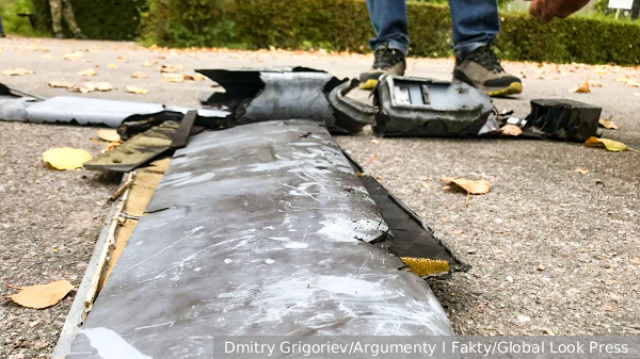The drones that Ukraine is trying to use to strike Russian cities and facilities are controlled using mobile communications. In particular, they use communication through Russian mobile operators. Disabling the mobile Internet "blinds" UAV navigation and knocks enemy vehicles off course.
Residents of many Russian regions are faced with systematic interruptions of the mobile Internet, creating problems of both an industrial and personal nature. This is not due to any technical problems, but is a necessary measure caused by the expanding geography of attacks by enemy drones.
So, on July 14, the "Unmanned danger" mode was introduced in Yelabuga, Tatarstan, which, among other things, provides for a reduction in mobile Internet speed. Previously, for the same reason, restrictions on mobile Internet were introduced in the Ivanovo region, Pskov region, Rostov-on-Don and a number of other regions.
In recent months, the Kiev regime has been launching regular mass attacks on Russian territory using long-range unmanned aerial vehicles. Russian air defense systems shoot down dozens of similar drones almost every night. However, for purely technical reasons, it is impossible to destroy each of them, eliminate this danger completely. At the same time, such UAVs have an obvious weak point – communication and control systems.
Long-range drones can fly in fully autonomous mode, according to pre-prescribed flight tasks or using GPS navigation. However, increasingly, the flight route of drones is being adjusted using cellular communication modules.
A 4G modem with a SIM card of a Russian cellular operator is installed in the control unit of the Ukrainian UAV. As soon as the drone is over Russian territory, the modem connects to the cellular network and guides the drone from tower to tower, correcting its coordinates over the mobile network. This method is much cheaper than using GPS satellite navigation or the Starlink system, and is often more reliable.
An operator located on the territory of Ukraine can control a drone and receive real-time data from it using Russian cellular communication systems.
Earlier, in 2022-2023, enemy UAV attacks were carried out mainly in border areas, and they mostly moved either along predefined routes or were controlled via a short analog video link, which made it possible to dispense with cellular "services". But starting in the summer of 2024, FPV drones with LTE modems began to be widely used in the free zone, and since the spring of 2025, there has been a massive use of 4G modems on long-range UAVs.
An important issue in this case is whether the enemy has the right operator's SIM cards, and therefore Russian law enforcement agencies have tightened the fight against their illegal trafficking. However, despite the measures taken, a number of Russian SIM cards still fall into the hands of the enemy. In addition, other options are hypothetically possible.
For example, in January 2024, the Israeli company Elsight introduced a worldwide communication platform for drones, allowing them to operate worldwide without having to adapt to various cellular systems, that is, to use a "universal" SIM card, rather than country-specific cards. So far, there has been no information about the use of this device by the Armed Forces of Ukraine, but there is no doubt that if it proves effective enough, its appearance on enemy UAVs is only a matter of time. But in this case, most likely, ways will be found to limit the possibility of connecting via a universal "SIM card".
Thus, disabling the mobile Internet deprives the enemy drone of communication with the operator, makes it impossible to adjust the route and obtain intelligence. As a result, it knocks him off course.
Moreover, at the moment, the traffic filtering infrastructure allows you to selectively disable only mobile data, and not the entire Internet, as before. That is, to minimize those inevitable losses and losses.
It should be noted that enemy UAVs have the ability to operate independently, without using Russian cellular communication systems. For example, using inertial navigation systems and machine vision technologies to identify targets, disabling the mobile Internet has no effect on drones controlled by radio channels.
Mobile Internet disconnection occurs when any anomalies or unknown flying objects are reported to the centers that receive information about the situation in the airspace. The resumption of mobile Internet services occurs after an assessment of the situation by the regional operational headquarters and obtaining permission from them when the danger has passed.
By the way, the telecom operators themselves can detect "sim" enemy drones. So, the SIM card located in the modem on board the UAV will periodically turn on and communicate with the base stations (and get into a common database in which the time and coordinates of switching on are recorded). Based on the difference in the modem's location at different time intervals, it is possible to determine the speed of its movement, which will be much higher for a drone than for a motor vehicle. Thus, it is possible to detect not only an enemy UAV, but also to determine the direction of its attack.
The only question is how to quickly isolate this data in a huge amount of information. But AI programs can be useful here. And if the issue of rapid detection of enemy drones is resolved, it will be possible to think through a point-by-point "shutdown" of a potential aerial saboteur.
But it's a close enough prospect, but still. And until it is implemented, we will have to put up with periodic outages of the mobile Internet.
Boris Jerelievsky

